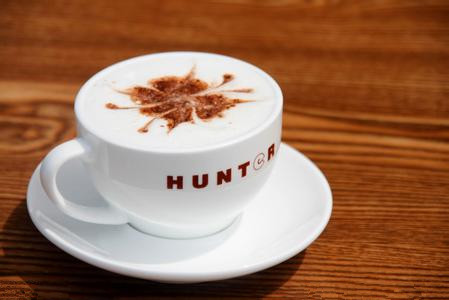Basic knowledge of Coffee the principle of the use of various coffee utensils

Filter / hand impact (Filter Coffee):
Use 1.5 ounces of lightly roasted and roughly ground coffee powder into filter paper (or flannel), slowly pour boiling water into the center of the coffee powder and extend around it, then return to the center from around, and then melt the coffee powder in boiling water and drip into the pot. The consumption of each cup of coffee is about 810g, and the boiling water is 85-90 ℃.
Mocha pot (Moka Maker):
It is a kind of distilled coffee brewed from a mocha pot with a steady concentration and aroma. The mocha pot is divided into two parts. The water is boiled in the lower half of the pot until it boils. When the water boils, due to the pressure of the steam, the boiling water rises through a filter containing coffee powder and reaches the upper half of the pot. When the coffee starts to flow to the top half of the pot, the fire needs to be turned down, because the high temperature will make the coffee scorch and destroy its original flavor. The common Japanese plug cooking method also uses the same principle of mocha.
Italian coffee maker (Espresso Machine):
Coffee drink is an extremely unstable liquid that can change its characteristics and taste at once. This is the main reason why the espresso machine (Espresso Machine) was invented. The espresso machine can continuously extract several cups of coffee, and the high pressure in the brewing process can emulsify and melt the oil and gum in the coffee beans, and the essence of the coffee beans can be completely extracted by pressure, making the brewed coffee more concentrated and more mellow in taste and flavor.
Siphon pot (Siphon):
First put the coffee powder into the upper funnel, then add water into the pot, then put the funnel mouth tightly into the kettle, boil the water, when the boiling water goes deep into the funnel, stir for about 40 minutes and 60 seconds, then turn off the alcohol lamp. When the coffee falls back into the pot, you can remove the funnel and pour out the coffee to drink.
French kettle (French press):
The French pressure method requires the use of a glass or porcelain vessel and a screen. In order to make the taste better, you'd better heat the vessel, put in the right amount of coffee powder after rough grinding, and soak in hot water just below the boiling point for 5 minutes. Stir slowly, and then enjoy the fun.
The automatic drip filter can produce moderate coffee without oil stains and sediments. Please choose a drip brewer with a minimum of 1000 watts. The coffee pot is a good coffee maker. In addition, remember to grind coffee beans according to the shape of the filter; the tapered filter is suitable for moderately ground coffee beans, and the flat-bottom transition is suitable for finely ground coffee beans.
The mocha pot is pressurized to make drip coffee, add moderately ground coffee to the metal coffee vessel, do not put too much water, do not exceed the height of the valve shown in the picture, then tighten the lid and heat it over warm heat. You can enjoy it when the top of the container is filled with coffee.
American drip Coffee maker (electric coffee maker):
The electric coffee pot has a simple structure, a device for burning hot water, and then the hot water drips directly through the filter containing coffee. Because of the fast flow rate, light taste and high water temperature, it is easy to over-extract coffee.
Naples pot (Napoletana):
It is also a kind of filtered coffee. Put the moderately ground coffee powder (5x6g / cup) into the filter in the pot, close the lid of the filter and put it into the water cooker. After the water is boiling, remove the pot and turn it upside down. 100℃ boiling water permeates the coffee powder in the filter and drips into the cup. The contact time between boiling water and coffee powder is between 2-4 minutes. Napoletana coffee will not be very thick, full and round and delicious.
Evellick brewing method (Turkish Coffee):
What is produced is a kind of coffee with concentrated, high concentration and a little fragrance. The method is to heat the copper coffee pot, put an appropriate amount (in the amount of one teaspoon per cup) into the pot and grind the coffee powder and sugar very finely, then brew it in boiling water for about 1 minute, wait for it to precipitate before drinking.
Important Notice :
前街咖啡 FrontStreet Coffee has moved to new addredd:
FrontStreet Coffee Address: 315,Donghua East Road,GuangZhou
Tel:020 38364473
- Prev

Know coffee utensils-French presser French Press
Section 1: the historical cognitive instrument of the French pressure kettle-the French pressure kettle, which can also be called the tea maker-French Press. As early as 30 years ago, Alfred Peet, founder of PeetPeets Coffee Tea, a famous roaster in the Berkeley district of the West Coast of the United States, made every effort to promote this convenient, fast and effective way of brewing. Pitt believes that the only way to use
- Next

French press using teaching coffee powder to water ratio
French Press translates directly into French press or French filter press, also known as filter press. It is a simple, lightweight and convenient brewing equipment. As long as the coffee beans are fresh, French press can also make a cup of mellow coffee. French press equipment: glass pot cup: coffee powder and hot water mixing place. Filter: There's a metal filter, and there's a pressure lever for you to come
Related
- Beginners will see the "Coffee pull flower" guide!
- What is the difference between ice blog purified milk and ordinary milk coffee?
- Why is the Philippines the largest producer of crops in Liberia?
- For coffee extraction, should the fine powder be retained?
- How does extracted espresso fill pressed powder? How much strength does it take to press the powder?
- How to make jasmine cold extract coffee? Is the jasmine + latte good?
- Will this little toy really make the coffee taste better? How does Lily Drip affect coffee extraction?
- Will the action of slapping the filter cup also affect coffee extraction?
- What's the difference between powder-to-water ratio and powder-to-liquid ratio?
- What is the Ethiopian local species? What does it have to do with Heirloom native species?

